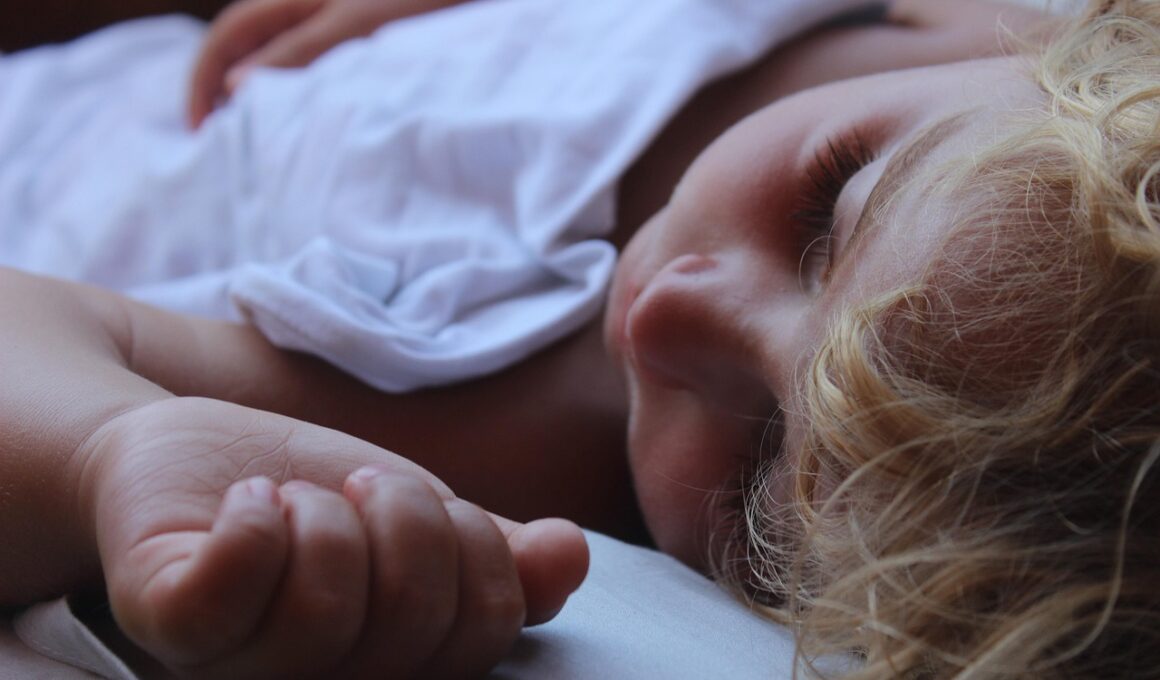Evening Light and Its Effects on Sleep Quality
The quality of our sleep can be significantly affected by various factors, and one critical element is light exposure, especially in the evening. Many of us are unaware of how artificial light impacts our sleep patterns. The incorporation of electronic gadgets into our nightly routines, which emit blue light, can interfere with the body’s natural circadian rhythms. Our bodies rely on darkness to signal that it’s time to wind down and get ready for sleep. When exposed to bright lights, especially from screens, melatonin production is suppressed. Melatonin is crucial for promoting sleepiness and reducing alertness. Without proper levels of melatonin, achieving restful and restorative sleep becomes challenging. This leads to various problems, including daytime sleepiness and reduced cognitive function. Furthermore, long-term exposure to disruptive light patterns can lead to chronic sleep issues. It is essential to understand the relationship between evening light and sleep health. By being conscious of our light exposure during the evening, we can make informed choices that support better sleep quality.
The effects of evening light exposure extend far beyond just falling asleep. Regular exposure to bright lights at night can alter our sleep architecture, meaning the structure of our sleep cycles is disrupted. Our sleep is divided into different stages: light sleep, deep sleep, and REM sleep, each playing a vital role in our overall rest and recovery. Disrupted sleep can result in deficits in cognitive functioning, mood disturbances, and increased stress levels. Research shows that individuals who are frequently exposed to artificial light in the evening often experience shallower sleep and shorter sleep duration. It’s crucial to recognize that not all light is created equal. The color temperature and intensity of the light can significantly impact our biological clocks. Warm, dim lighting may pose less of a threat to our sleep than bright, cool lighting. The key is to create a conducive environment for rest, prioritizing darkness during the evenings. Implementing strategies such as using dimmers, blocking blue light from screens, and keeping rooms darkened can profoundly enhance sleep quality.
The Importance of Melatonin in Sleep
Melatonin, often referred to as the sleep hormone, helps regulate sleep-wake cycles and is heavily influenced by light exposure. Our body’s melatonin production is naturally triggered by darkness, peaking during the night when we are asleep. When evening light exposure is too intense, it can lead to delays in melatonin secretion, causing difficulty falling asleep and poor quality of sleep. An interesting aspect of melatonin is its additional benefits; it also acts as an antioxidant and helps strengthen the immune response. People who grapple with insomnia or other sleep disorders often report irregular melatonin cycles. In an increasingly digital world, where the cultures of late-night screen time and bright indoor lighting prevail, many find themselves struggling to regulate their sleep hormone levels appropriately. Acknowledging the importance of maintaining proper melatonin levels can lead to healthier sleep practices. Adjustments such as limiting exposure to screens before bedtime, wearing blue light glasses, or even using black-out curtains can be beneficial strategies to promote better sleep hygiene and enhance melatonin function.
Moreover, natural light exposure during the day plays an essential role in the context of our overall sleep quality. Sunlight helps to regulate our natural circadian rhythms, and maintaining a healthy balance between daytime light exposure and evening darkness is essential. During the day, bright natural light supports alertness and overall well-being, while at night, darkness signals the production of melatonin necessary for sleep. The interplay between sunlight and artificial evening light forms a delicate cycle that can greatly influence our sleep health. Those who spend time outdoors in natural sunlight are often able to better regulate their body clocks, facilitating improved sleep patterns. On the flip side, excessive artificial light from devices and lighting can disrupt this natural cycle. Adopting healthier habits such as taking walks outside during daylight hours can be beneficial. This practice not only enhances mood but may also foster better sleep at night. Incorporating regular outdoor activity promotes consistency in the sleep-wake cycle, which is vital for long-term sleep health.
Strategic Light Management in the Evening
Managing evening light exposure is crucial for optimizing sleep quality. There are various strategies that individuals can adopt to mitigate the negative effects of light on their sleep. Simple changes, such as dimming interior lights, using lamps with warmer hues, or utilizing candlelight can signal the body that it’s time to unwind. Implementing a technology curfew can also create a buffer by setting specific times to turn off all screens. This curtailment not only helps reduce blue light exposure but also cultivates healthier routines by fostering relaxing pre-sleep habits. Additionally, apps designed to reduce blue light emission from screens can be a useful tool in evening routines. Software options like these can adjust screen tones according to the time of day, gradually shifting to softer hues as night falls. Another important tip is to create a sleep sanctuary by keeping the bedroom dark and cool. Consider using blackout curtains and minimizing exterior light sources to ensure a restful environment conducive to deep sleep.
As more research sheds light on the relationship between evening light and sleep quality, awareness grows regarding lifestyle adjustments needed for optimal rest. Power naps, traditionally identified as short, restorative sleep bursts, are often misaligned with natural awake periods due to disruptive evening light patterns. Finding the right balance between work, leisure, and sleep can be particularly challenging for those in urban settings with constant external light influence. Many are unaware that those frequent late-night light exposures can contribute to accumulated sleep debt, affecting productivity and cognitive performance during daytime activities. Educating oneself about the biological impacts of light will empower individuals to make informed decisions regarding their evening habits. By recognizing the signs that evening light disrupts one’s sleep patterns, personal accountability and proactive measures can be taken to align with natural circadian rhythms. The journey toward improving sleep quality begins with understanding that one’s environment plays a vital role. Embracing practices that focus on reducing evening light exposure can foster deeper and more restorative sleep cycles.
The Role of Technology in Evening Sleep Patterns
The technology landscape we navigate today determines much of our interaction with light during the evening. Smart devices, which include mobile phones, tablets, and computers, can heavily dominate nighttime routines. This dependency on technology has not only modified our social interactions but also reshaped our approach to sleep. The consistent glow from screens encourages alertness when the body should be preparing for sleep. Emerging research supports the idea that limiting screen time can yield immediate benefits to sleep quality. Implementing solutions such as ‘Do Not Disturb’ settings or scheduling social media breaks may be practical steps for minimizing disruptive light. Additionally, a rise in the popularity of sleep-tracking devices and applications highlights the growing concern over sleep quality. These devices provide users with insights on sleep patterns, but excessive checking can paradoxically contribute to sleep disturbance. To maximize the potential benefits of these technologies, individuals must prioritize when and how these tools are used. The focus should pivot toward embracing technology that promotes healthy sleep instead of undermining it. Such a balance is key to restoring and maintaining sleep health.
In conclusion, our understanding of evening light and its effects on sleep patterns emphasizes the necessity for conscious management of our environments. As we navigate through modern life with ever-present screen-time demands and artificial lighting, adopting specific strategies to protect our sleep becomes imperative. Each adjustment we make, whether simple or complex, accumulates to influence sleep quality positively. This collective awareness can lead to improved health and heightened well-being. Learning to create an evening atmosphere that promotes relaxation hinges on understanding the science of light exposure and its physiological effects. By prioritizing darkness in personal routines, individuals ensure that they honor their body’s natural signals for sleep. It’s essential to view sleep health as a holistic endeavor intertwined with our environments and technology use. Taking actionable steps to improve light conditions during the evening not only supports better sleep but also enhances overall life quality. As more individuals embrace these changes, sleep issues may decrease, leading to healthier lifestyles. A balance between light exposure and sleep quality fosters an environment where restful sleep encourages a thriving existence.


